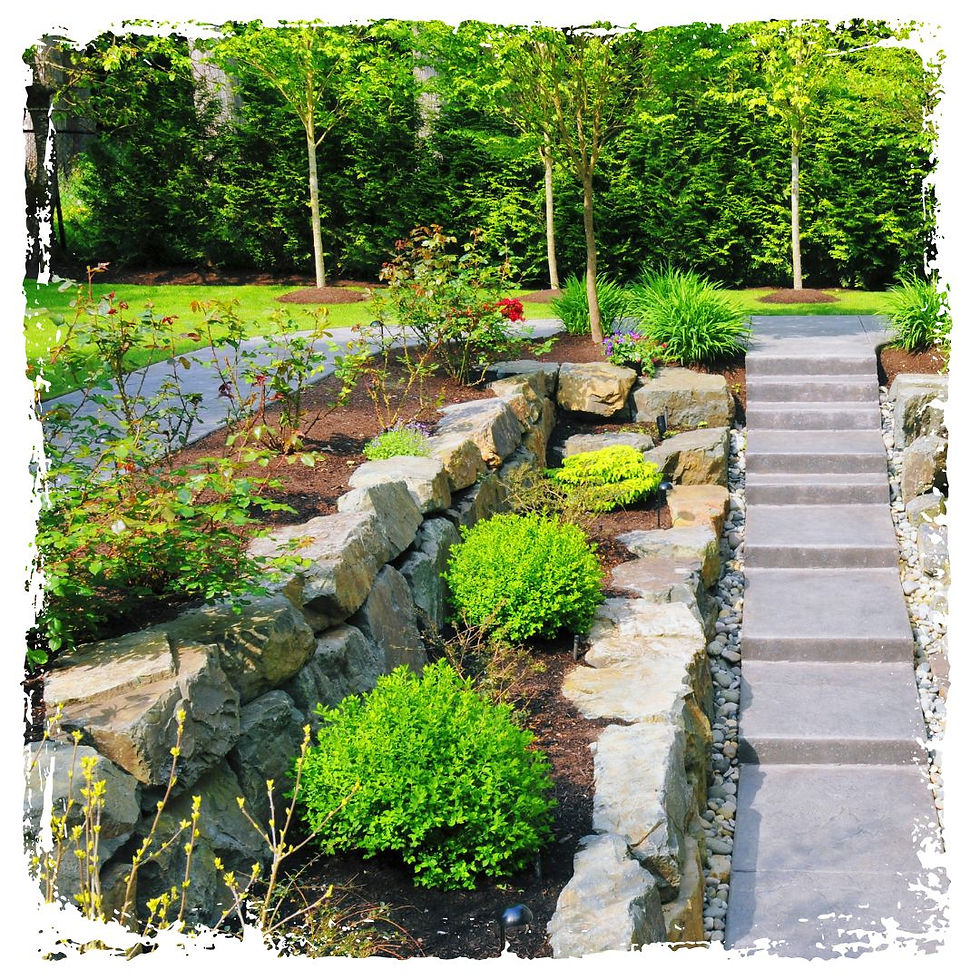Fall Lawn Revival: Why Aeration + Overseeding Is the Smartest Move for Omaha Lawns
- melawncare
- Sep 9
- 4 min read
If your lawn struggled through summer—thin spots, compacted soil, weeds creeping in—you’re not alone. Eastern Nebraska’s clay-heavy soils and our hot, dry spells are tough on turf. The most effective way to bounce back before winter is a one-two punch: core aeration followed immediately by overseeding. At M.E. LawnCare, we time and tailor this service for Omaha-area yards (Papillion, Elkhorn, Millard, and beyond) so you get thicker, greener grass next spring—without wasting seed or water.
Why Core Aeration Matters
Core aeration pulls small plugs of soil from your lawn, creating thousands of channels that:
Relieve compaction from foot traffic, mowing, and heavy clay
Improve oxygen flow to roots and beneficial microbes
Help water and nutrients soak in instead of running off
Create perfect seed-to-soil contact for new grass
Those little cores on the surface? Leave them. They break down in a week or two and return organic matter to the soil. More airflow + better absorption = stronger roots and a lawn that tolerates heat, foot traffic, and drought better next year.
Why Overseeding Right After Aeration Works Best
Seeding immediately after Aeration uses those fresh holes like little planters. It dramatically improves germination because:
Seeds fall into the openings for secure seed-to-soil contact
Moisture lingers longer in the holes, keeping seeds hydrated
New seedlings establish deep roots faster where oxygen is abundant
For our region, we typically blend Kentucky bluegrass and turf-type tall fescue—cool-season varieties that handle Nebraska winters and summers. If your yard is sunny, shady, or has pet wear, we’ll match the seed blend to the site so it fills in bare patches and thickens the entire lawn.
The Right Timing for Omaha and Surrounding Communities
In eastern Nebraska, the sweet spot is late August through mid-October. Soil is still warm (which speeds germination), nights are cooler (less stress on new grass), and fall weeds are slowing down. Seed started in this window has weeks to root before the first hard freeze, then wakes up early in spring with a head start on density and color.
If you miss that window, spring seeding is possible—but you’ll fight more weeds and heat. Fall gives you the best return on every seed.
What to Expect with M.E. LawnCare’s Aeration + Overseeding
Site evaluation: We look at sun exposure, traffic patterns, irrigation coverage, and problem areas. Thin shade? Pet paths? We plan for it.
Core aeration: Professional-grade equipment pulls consistent plugs 2–3 inches deep across the whole lawn, focusing extra passes on compacted sections (play areas, corners, gate entries).
Premium seed blend: We use high-germination, region-appropriate varieties—no filler. Coverage is calibrated to your lawn size and goals (full refresh vs. spot strengthening).
Starter fertilizer (optional but recommended): A balanced, phosphorus-appropriate starter helps roots form quickly. If you’re in our 6-step fertilizer and weed control program, we’ll time this treatment to support new seedlings while keeping fall weeds at bay.
Watering plan: You’ll get a simple schedule: keep the top ½ inch of soil consistently moist (light, frequent watering) for the first 2–3 weeks, then taper to deeper, less frequent watering to train roots downward. If you have an irrigation system, we’ll help you set run times.
Post-service care: Mow when the new grass reaches about 3.5–4 inches, trimming it back to 3 inches. Keep blades sharp. Avoid heavy traffic for the first few weeks.
Results You’ll Notice
Within 10–14 days (weather dependent), you’ll see uniform green fuzz filling in thin areas. Over the next 4–6 weeks, density and color improve steadily. By spring, your lawn should be thicker, more resilient, and far better at outcompeting weeds. Many clients see reduced watering needs next summer because deeper roots make better use of moisture.
Common Questions, Answered
Will Aeration damage my lawn?
No—core aeration is restorative. The holes close naturally, and the turf rebounds thicker.
Do I need topsoil or compost?
Not always. Aeration often provides enough soil contact. For impoverished soil, we can topdress with a thin layer of compost to boost organic matter and microbial life.
What about weeds after seeding?
We avoid pre-emergent herbicides during seeding because they block germination. Instead, we seed densely, feed appropriately, and address broadleaf weeds later with seed-safe options once new grass is established.
How soon will it look “full”?
You’ll notice a clear difference in 4–6 weeks, with the best payoff in spring when root systems mature.
Pair It with Smart Fall Maintenance
To maximize your investment:
Keep mowing at ~3 inches through fall—this promotes tillering (more shoots per plant).
Rake leaves promptly; new seedlings need light.
Feed the lawn—fall fertilization fuels root growth. Ask about aligning your aeration/overseed with our fertilizer program for a smoother hand-off into winter.
Tune sprinklers for even coverage; adjust run times as temperatures drop.
Ready to Book? Fall Slots Fill Fast
Aeration and overseeding are the most cost-effective upgrades you can make to your lawn each year—especially in our compacted, clay-heavy soils. If you want a thicker, greener lawn next spring, the time to act is now.
Schedule your fall aeration and overseeding with M.E. LawnCare. We’ll assess your yard, select the right seed blend, and handle the details so you get reliable results without guesswork. Reach out today, and let’s set your lawn up for a strong spring.



Comments